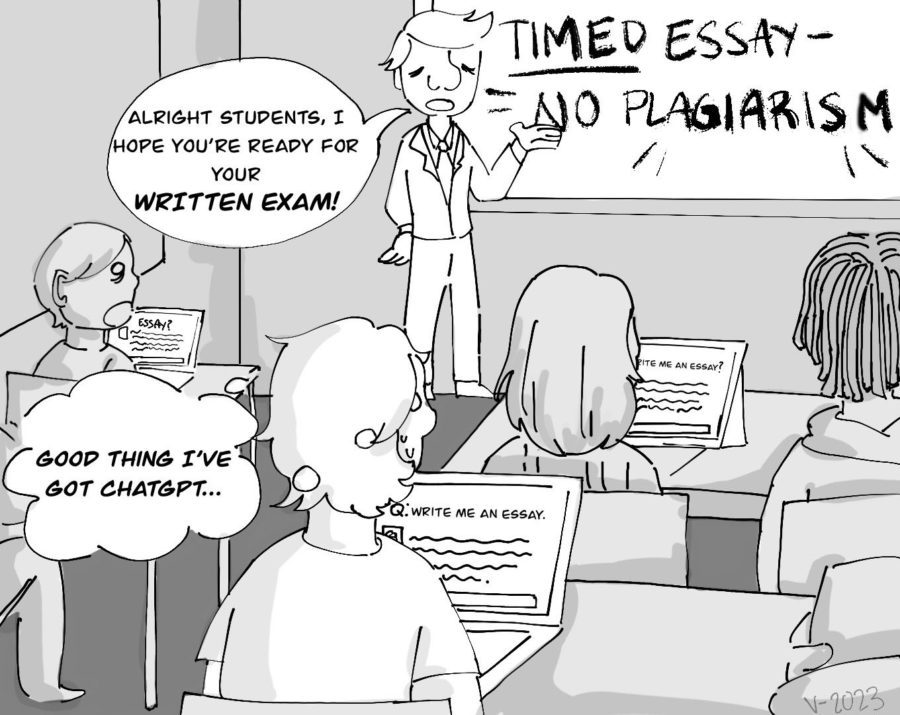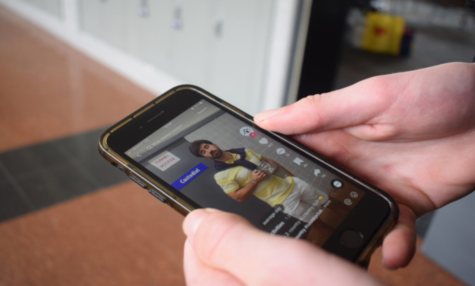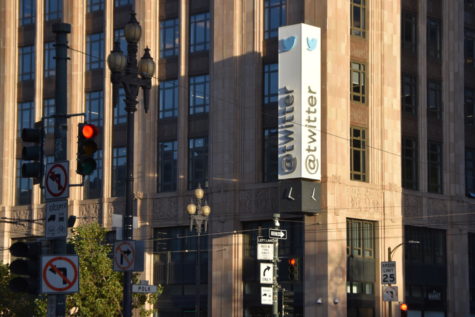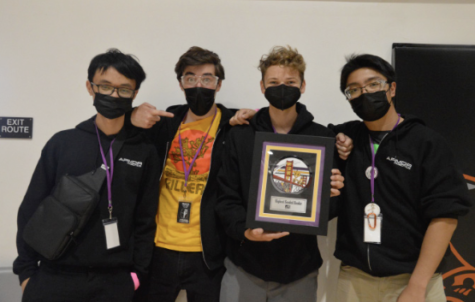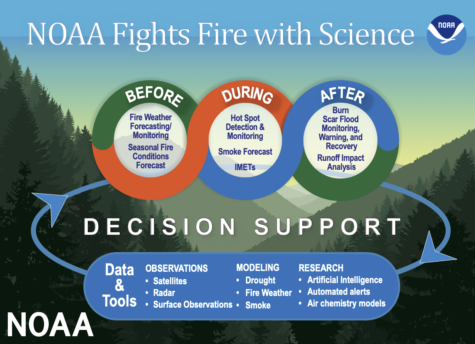ChatGPT revolutionizes communication
ChatGPT enables people to use artificial intelligence to create essays by feeding it a prompt, but can cause consequences for users when plagiarism is detected.
March 9, 2023
In the past month, the world has been taken by a storm in the form of a new software sensation.
ChatGPT, a chatbot that can answer questions and various prompts, has gained popularity due to its ability to seemingly create essays and answers out of thin air. All a user must do is type in their question, and ChatGPT creates the perfect response. But how does this really work?
Created by Sam Altman in late 2015, ChatGPT is a form of Artificial Intelligence called a chatbot, which is able to carry out conversation and dialog with an alarming human-like nature. Using various technological techniques like Reinforcement Learning with Human Feedback (RLHF) and large language models, ChatGPT is able to predict the next word in a user’s sentence and can even translate writing from one language to another.
While ChatGPT can be used to create notes and assist with slideshows, some have found a way to use this exciting piece of technology for harmful purposes. ChatGPT has many purposes besides writing essays and notes, including writing code. Amateur cyber criminals and ransomware gangs may not require the previous technological skills and experience with ChatGPT providing the automated code creation necessary for writing basic scripts.
This new wave of technology calls for evolution in not only the technological world, but also in all levels of education. Any student who is given access to a device has the capability to use ChatGPT to assist with their essays and assignments. Jonathan Jeffers ‘25, a Riordan student, said “ChatGPT is a helpful resource with a plethora of information, however, there is always room for harmful use”.
With such a wide variety of information available on the software, many teachers have become concerned with the intentions of some students who may intend to use ChatGPT to complete their assignments for them, thus creating the term “AI Plagiarism.” Mary Dalton, a Riordan English teacher, said “it’s a great resource for teachers, but for students, it’s not that helpful as we have plagiarism detection softwares like Turnitin.com”.
Although ChatGPT may seem untraceable, a college student has found a way to detect its use. Edward Tian, a senior at Princeton University, has developed a bot that will alert a teacher or administrator if a student’s work has been created by ChatGPT. Tian calls his bot GPTZero.
“There’s so much chat hype going around. Is this and that written by AI? We as humans deserve to know!” Tian wrote in a tweet.
The bot detects ChatGPT’s work on two factors, perplexity, and burstiness. Tian’s bot compares the length of sentences or “burstiness” which may be more uniform when written by ChatGPT, as humans usually create a range of short or longer sentences. In addition, human written sentences will contain phrases unfamiliar to the bot, whereas generated writing will seem familiar.
Editor’s Note: This headline was written using ChatGPT.


